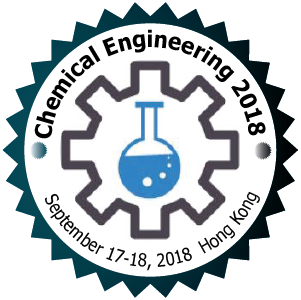
Hiroshi Irie
University of Yamanashi, Japan
Title: Construction of a solid-state overall water-splitting photocatalyst, sensitive to red-light, for solar hydrogen production
Biography
Biography: Hiroshi Irie
Abstract
Various photocatalytic materials aiming at water splitting have been enthusiastically investigated because produced hydrogen (H2) is attractive as a clean and renewable fuel. To date, one of the candidate methods to split water to H2 and oxygen (O2) at a ratio of 2:1 under visible light is a combined system of half reaction photocatalysts, that is, H2-evolution and O2-evolution photocatalysts. However, because such the combination system, which is termed “Z-scheme”, requires a suitable redox couple, the system is not in fact able to split pure water. For the practical application, splitting pure water with no added chemicals is presumed to be favorable.
Recently, we reported an Ag-inserted solid-state hetero-junction photocatalyst for water-splitting under visible light, similar to a Z-scheme system but is not required for a redox mediator. So, this system is capable of splitting pure water. In this system, Ag acts as a solid electron mediator for water-splitting. We selected ZnRh2O4 (band-gap (Eg) = 1.2 eV) and AgSbO3 (Eg = 2.5 eV) as H2- and O2-evolution photocatalysts, respectively. The system was able to respond to visible light up to 545 nm depending on the photo-absorption capability of AgSbO3 (in fact, defective AgSbO3). So, we replaced AgSbO3 with Bi4V2O11 (Eg = 1.7 eV) as the O2-photocatalyst. Utilizing thus constructed Ag-inserted ZnRh2O4 and Bi4V2O11 photocatalyst, the simultaneous liberation of H2 and O2 from pure water at a stoichiometric ratio was achieved under irradiation with visible light up to wavelengths of 740 nm. In place of Ag, Au-inserted ZnRh2O4 and Bi4V2O11 photocatalyst was also able to accomplish overall pure-water splitting under visible light up to 740 nm with improved activity. Detailed investigations will be discussed at the conference.

